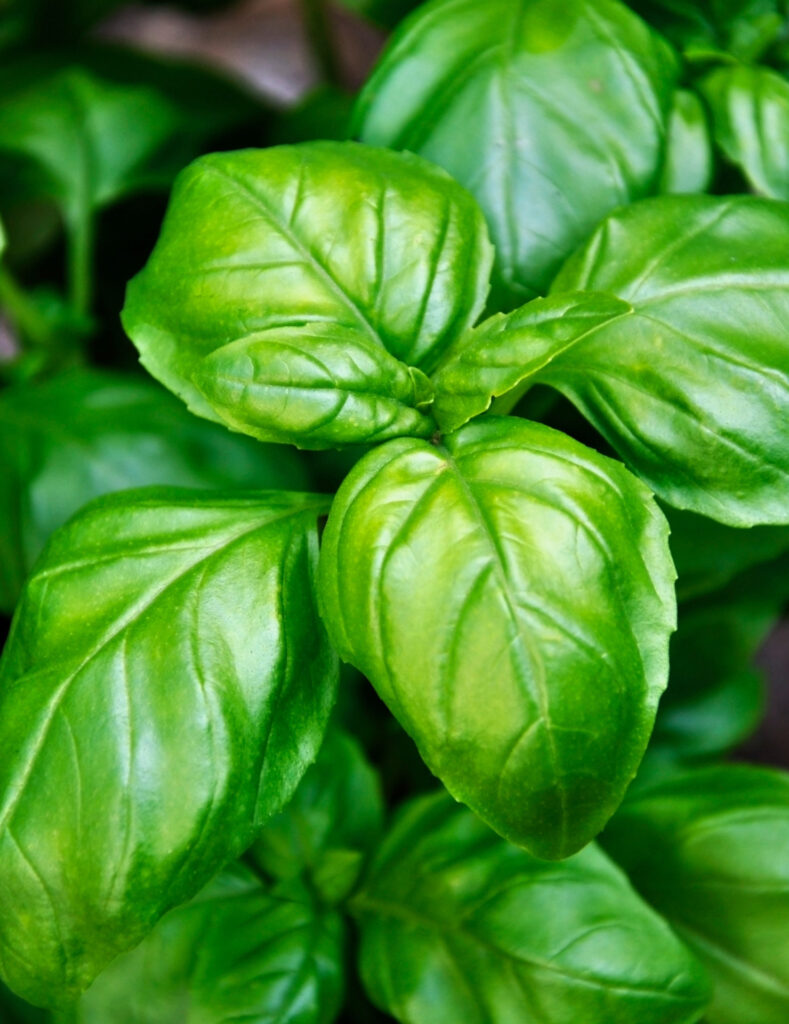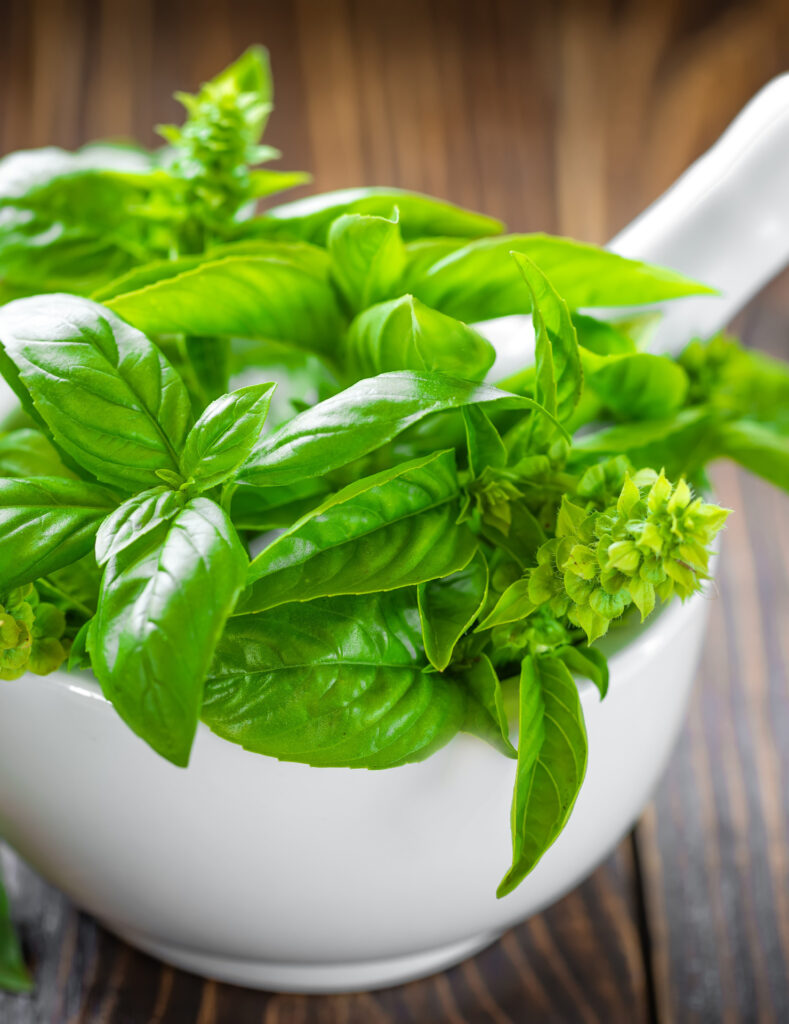Freezing basil is a simple yet effective method for preserving this beloved herb’s fresh and aromatic qualities, allowing you to savor its vibrant flavor long after its growing season. Whether you have a bountiful basil harvest from your garden or want to make the most of store-bought bundles, freezing basil provides a convenient way to extend its usability in various culinary creations.

How To Freeze Basil While Still Keeping All The Flavor
By carefully preparing and freezing basil leaves, you can ensure a ready supply of this fragrant ingredient to enhance a wide range of dishes, from hearty soups and savory sauces to homemade pesto. Discover the art of freezing basil and unlock a world of culinary possibilities where the essence of summer can be enjoyed all year round.
Basic tips for freezing basil for beginners
Freezing basil is a great way to preserve its fresh flavor and vibrant green color for later use. Here are some basic tips for beginners on how to freeze basil effectively:
- Harvest Fresh Basil: Choose fresh, healthy basil leaves from your garden or purchase them from a store. Select leaves that are free from any signs of damage or disease.
- Wash and Dry: Gently wash the basil leaves under cold running water to remove dirt or insects. Pat them dry with a clean kitchen towel or paper towels. Make sure they are completely dry before proceeding.
- Blanching (Optional): Blanching helps preserve the color and flavor of basil. It’s an optional step, but if you choose to blanch, bring a pot of water to a boil and prepare an ice-water bath. Briefly dip the basil leaves into the boiling water for 5-10 seconds, then immediately transfer them to the ice water bath to cool. Drain and pat dry.
- Prep for Freezing: You have a couple of options here:
- Whole Leaves: Place the dry basil leaves on a baking sheet lined with parchment paper in a single layer. Make sure they are not touching each other. Flash freeze them for about 1-2 hours in the freezer until solid.
- Chopped or Pesto: Alternatively, you can blend the basil leaves with olive oil and garlic to make a basil pesto. Spoon the pesto into ice cube trays or small airtight containers.
- Packaging: Once the basil leaves or pesto cubes are frozen, transfer them to airtight, freezer-safe containers or resealable plastic bags. Remove as much air as possible to prevent freezer burn. Label the containers with the date for future reference.
- Freezing:Place the containers or bags in the freezer. For best results, use the frozen basil within 4-6 months. Over time, the flavor and color may start to degrade.
- Using Frozen Basil: When you’re ready to use frozen basil, you can crumble the leaves into your dishes or add a pesto cube to your recipes. There’s no need to thaw them first. For pesto, let the cube thaw slightly or heat it gently to make it easier to scoop out.
Remember that frozen basil might not retain the same texture as fresh basil, but it will still impart its delicious flavor to your dishes.
Can you freeze raw basil?
Yes, you can freeze raw basil, and it’s quite common to do so. Freezing raw basil helps preserve its flavor and aroma for later use in various dishes. Here’s how you can freeze raw basil:
- Harvest and Prepare Basil: Choose fresh, healthy basil leaves and gently wash them under cold running water to remove dirt. Pat them dry with a clean kitchen towel or paper towel. Make sure the leaves are completely dry before proceeding.
- Flash Freeze: Lay the individual basil leaves on a baking sheet lined with parchment paper. Make sure they are not touching each other. Place the baking sheet in the freezer and let the basil leaves freeze for about 1-2 hours. This process, known as flash freezing, prevents the leaves from sticking together in a clump.
- Transfer to Freezer Bags or Containers: Carefully transfer the basil leaves to resealable plastic freezer bags or airtight freezer-safe containers once the basil leaves are frozen. Try to remove as much air as possible from the bags to prevent freezer burn. Alternatively, you can vacuum-seal the basil leaves for even better preservation.
- Label and Store: Label the bags or containers with the freezing date for future reference. Store the frozen basil in the freezer.
- Using Frozen Basil: When you’re ready to use the frozen basil, you can simply take out the desired amount of leaves from the freezer and crumble them directly into your dishes. There’s no need to thaw them first. Remember that frozen basil might not have the same texture as fresh basil, but it will still contribute its unique flavor to your recipes.
Frozen basil works well in cooked dishes such as soups, stews, sauces, and casseroles. However, it may not be suitable for dishes that rely on the texture of fresh basil, such as salads or garnishes.

Is it better to freeze basil in water or olive oil?
Freezing basil in olive oil is generally preferred over freezing it in water. Freezing basil in water can cause the leaves to become mushy and lose some of their flavor and aroma. On the other hand, freezing basil in olive oil helps retain its vibrant color, distinct flavor, and aromatic qualities.
The oil acts as a protective barrier, preventing the basil leaves from freezer burn and maintaining their integrity. To freeze basil in olive oil, you can either blend the leaves with oil to create a basil paste or finely chop the leaves and mix them with oil before freezing them in ice cube trays or small airtight containers. This method allows for convenient portioning and easy incorporation into various dishes, such as sautés, sauces, and dressings.
Whether you’re a beginner or an experienced cook, freezing basil in olive oil offers a reliable way to preserve this herb’s essence and enhance your culinary creations.
Should I wash basil before freezing?
Yes, washing basil before freezing is recommended to preserve the herb in its best possible state. Washing the basil removes any dirt, debris, or potential contaminants that may be present on the leaves. However, handling the basil gently during washing is important to prevent bruising or damaging the delicate leaves.
To wash basil before freezing, Gently separate the leaves from the stems and place them in a colander or strainer.
Rinse the leaves under cold running water, allowing the water to wash away any dirt or foreign particles. Swish the leaves around in the water to ensure thorough cleaning. After washing, gently pat the basil leaves dry with a clean kitchen towel or paper towels. It’s crucial to ensure that the leaves are completely dry before freezing to prevent ice crystals from forming on the leaves, which can impact their texture and quality.
By washing and thoroughly drying the basil before freezing, you set the foundation for preserving its freshness, flavor, and vibrant green color. Properly cleaned and dried basil leaves will freeze more effectively and provide better results when used in your favorite recipes later on.

What can I use frozen basil in?
Frozen basil can be a versatile ingredient that adds a burst of flavor to various dishes. It’s one of my favorite ways to spruce up pasta dishes, tomato sauce, pizza sauce, and more Here are 20 recipe ideas where you can use frozen basil:
- Pasta Sauces / Spaghetti Sauce: Add frozen basil to tomato or cream-based pasta sauces for a fresh herby twist.
- Soups: Stir in frozen basil to enhance the flavor of soups like tomato, minestrone, or potato.
- Stir-Fries: Toss frozen basil into vegetable or protein stir-fries for an aromatic touch.
- Pesto: Thaw frozen basil and blend it with garlic, nuts, cheese, and olive oil to make classic pesto.
- Salad Dressings: Blend or crumble frozen basil into homemade vinaigrettes for a zesty kick.
- Marinades: Mix thawed basil with oil, vinegar, and herbs for a flavorful marinade for meats or vegetables.
- Grilled Cheese: Place a basil leaf between cheese layers in a grilled cheese sandwich.
- Pizza Topping: Scatter frozen basil over pizzas before baking for added freshness.
- Bruschetta: Mix thawed basil into diced tomatoes, garlic, and olive oil for a delicious bruschetta topping.
- Omelets and Scrambles: Add frozen basil to egg dishes like omelets and scrambles for flavor.
- Rice or Grain Bowls: Mix thawed basil into rice or grain bowls for a Mediterranean flair.
- Savory Breads: Fold frozen basil into savory quick bread or muffin batters before baking.
- Creamy Dips: Incorporate thawed basil into creamy dips like hummus or spinach-artichoke dip.
- Tomato Basil Soup: Enhance the flavor of a tomato basil soup by stirring in frozen basil.
- Roasted Vegetables: Toss frozen basil with roasted vegetables and a little olive oil before serving.
- Pasta Salads: Mix thawed basil into pasta salads, fresh vegetables, and dressing.
- Garnish: Sprinkle crumbled frozen basil over finished dishes as a flavorful garnish.
- Herbed Butter: Blend thawed basil into softened butter for a tasty herb-infused spread.
- Sauces for Meats: Create pan sauces using frozen basil to accompany grilled or roasted meats.
- Infused Water or Beverages: Add frozen basil to water, lemonade, or cocktails for a refreshing herbal twist.
Store leftovers in a freezer-safe container to avoid food waste.
Is it better to freeze or dry basil?
Whether to freeze or dry basil depends on your preference and how you plan to use it. Both methods have their advantages and are suitable for different culinary applications. Here’s a comparison to help you decide which method might be better for your needs:
Freezing Basil:
Advantages:
- Retains Freshness: Freezing basil preserves its fresh flavor, vibrant color, and aromatic qualities better than drying.
- Versatility: Frozen basil can be used in a wide range of dishes, including sauces, soups, stews, and more.
- Convenience: It’s a simple process that requires minimal preparation, making it a quick way to preserve basil.
- Minimal Loss of Nutrients: Freezing basil generally leads to less nutrient loss compared to drying.
Disadvantages:
- Texture Changes: Frozen basil might not retain the same texture as fresh basil, so it’s best suited for cooked dishes.
- Storage Space: Frozen basil takes up freezer space, which might be a consideration if you have limited storage.
Drying Basil:
Advantages:
- Long Shelf Life: Dried basil can be stored for a longer time compared to frozen basil.
- Space-Efficient: Dried basil takes up less space than frozen basil, making it easier to store.
- Crispy Texture: Dried basil has a crisp texture that works well in certain dishes like pasta, pizza, and baked goods.
Disadvantages:
- Flavor and Aroma: Dried basil may have a slightly altered flavor and aroma compared to fresh basil.
- Limited Use: Dried basil is best suited for recipes where the texture is not crucial, such as dishes that require cooking or baking.
In summary, freezing is generally a better option if you prioritize preserving basil’s fresh flavor, color, and aroma. It’s particularly well-suited for dishes that involve cooking. On the other hand, if you’re looking for a longer shelf life and don’t mind a slightly different flavor profile, drying basil can be a good choice, especially for baking or simmering recipes. Ultimately, the decision between freezing and drying basil depends on how you plan to use it and your taste preferences.

Easy Pesto Recipe Idea
Here’s a classic fresh basil pesto recipe to enjoy with pasta, spread, or in various dishes. Basil plants really are one of my favorite herbs! This recipe requires fresh leaves. Feel free to adjust the quantities to suit your taste.
Classic Basil Pesto:
Ingredients:
- 2 cups fresh basil leaves, packed
- 1/2 cup pine nuts or walnuts, toasted
- 1/2 cup grated Parmesan cheese
- 2-3 cloves garlic, peeled
- 1/2 cup extra-virgin olive oil
- Salt and freshly ground black pepper, to taste
- Optional: 1 teaspoon lemon juice or zest for added brightness
Instructions:
- Prepare Basil: Wash the basil leaves thoroughly and pat them dry using a clean kitchen towel or paper towels.
- Toast Nuts: In a dry skillet over medium heat, toast the pine nuts or walnuts until they are lightly golden and fragrant. Keep a close eye on them to prevent burning. Remove from heat and let them cool.
- Blend Ingredients: In a food processor, combine the basil leaves, toasted nuts, grated Parmesan cheese, and garlic cloves. Pulse several times until the ingredients are roughly chopped.
- Add Olive Oil: With the food processor running, slowly drizzle in the olive oil through the feed tube. Scrape down the sides of the bowl as needed. Continue processing until the mixture reaches your desired consistency – smooth or slightly chunky.
- Season: Season the pesto with salt and freshly ground black pepper. If desired, add lemon juice or zest to brighten the flavors.
- Taste and Adjust: Taste the pesto and adjust the seasoning as needed. You can also adjust the amount of garlic, nuts, or cheese according to your preferences.
Tips:
- You can customize your pesto by adding herbs like parsley or cilantro for a unique twist.
- For a nut-free version, you can use seeds like sunflower seeds or pumpkin seeds.
- Pesto can be stored in the refrigerator for up to a week or frozen for several months. To freeze, you can spoon the pesto into ice cube trays and transfer the cubes to a freezer-safe bag once frozen.
This classic basil pesto is incredibly versatile and can be used as a pasta sauce, a spread on bread or crackers, a topping for grilled meats or vegetables, and more.
What do I do if my basil has brown spots?
If your basil has developed brown spots, addressing the issue is important to prevent further deterioration. Various factors, including disease, pests, improper watering, or physical damage can cause brown spots on basil leaves. Here’s what you can do if your basil has brown spots:
- Inspect and Remove Damaged Leaves: Carefully examine the basil plant and identify the leaves with brown spots. Gently remove these damaged leaves from the plant to prevent the spread of any potential issues.
- Check for Pests: Examine the remaining leaves and the surrounding area for signs of pests such as aphids, mites, or caterpillars. If pests are present, take appropriate measures to control them, such as using insecticidal soap or natural predators.
- Adjust Watering: Overwatering or inconsistent watering can lead to fungal diseases that cause brown spots. Ensure that the basil plant is receiving adequate but not excessive moisture. Water the plant at the base and avoid getting the leaves wet.
- Provide Good Drainage: Ensure the basil plant is in well-draining soil and has proper drainage to prevent waterlogged roots, which can lead to various issues, including brown spots.
- Proper Air Circulation: Ensure that the basil plant has good air circulation, as stagnant air can contribute to developing fungal diseases. Avoid overcrowding and provide enough space between plants.
- Pruning: Regularly prune your basil plant to encourage new growth and prevent overcrowding. This can help improve air circulation and reduce the risk of fungal issues.
- Avoid Overhead Watering: When watering your basil, avoid overhead watering methods that can splash water onto the leaves. Watering at the base of the plant helps prevent fungal spores from splashing onto the leaves and causing spots.
- Fertilize Properly: Use a balanced fertilizer according to the instructions to provide your basil with essential nutrients. However, avoid over-fertilizing, as excessive nitrogen can lead to leaf problems.
- Provide Shade: If your basil is exposed to intense sunlight for extended periods, it can develop sunburn, leading to brown spots. Consider providing some shade during the hottest parts of the day.
Addressing the underlying cause of brown spots and providing appropriate care will help ensure the health and vitality of your basil plant.

The fresh taste of basil can be preserved using different methods. When you have lots of basil and don’t know what to do, freezing is the easiest method to consider. Frozen cubes, baking trays are two traditional options.
